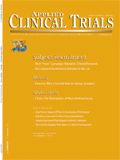Adapt to Adaptive Designs
Applied Clinical Trials
It's out with the old, in with the new for clinical development.
Last year the FDA issued draft guidance regarding the use of adaptive techniques to conduct clinical evaluations of new devices.1 The European Agency for the Evaluation of Medical Products has similarly encouraged adaptive techniques even more broadly to include evaluating drugs.2
These important steps acknowledge two important developments: quicker access to study data provided by electronic means and statistical tools that allow fine tuning during the course of a study. This new guidance presents a rare win-win-win opportunity for patients, manufacturers, and regulators and has profound implications for the industry.

Michael Rosenberg
Invaluable insight
The actions of both agencies recognize the benefits of incorporating experience accumulated in the running of studies to fine tune them as they progress forward, and action can be taken when appropriate rather than awaiting study completion. Sample sizes are thus determined by outcomes and not guesses about efficacy, placebo response, dropouts or variance. Pruning ensures that successful treatment arms are retained while less efficacious and/or safe arms are reduced or dropped. And sequential analysis ensures maintenance of statistical impartiality rather than a single make-or-break analysis at the end of the study.
The implications of the adaptive approach are more immediate for device manufacturers because they often deal with clearer definitions of efficacy and safety. The performance of a pacemaker, for example, can be defined in terms of its ability to arrest a tachyarrhythmia. Assessing drug candidates for effect on cognitive function in Alzheimer's patients is more complex. Thus, the insight provided by adaptive methods is even more timely and important for drugs and biologicals because of their greater development complexity.
A major shift is that adaptive techniques require timely, continuous evaluation of a range of variables. The pharmaceutical industry currently relies almost exclusively on a black box, wait-and-see approach to development—a study is designed, run, and then results are examined at the study's completion.
It is not fair or accurate to blame regulation for the failure to track study performance or incorporate experience accumulated during a study. The real culprit is a type of complacency that would be unthinkable in a highly competitive industry such as manufacturing. An example is current Web-based EDC systems that focus narrowly on data to the exclusion of performance measures that allow the effective management of complex studies. The industry accepts having limited management capabilities for the studies that are the lifeblood of their businesses.
Moving forward
What must happen for pharmaceutical and device companies to adapt to adaptive approaches? First, they must be willing to adopt a new model that closely tracks trial performance and outcomes and allows for fine tuning. Second, decision making must be faster and more flexible. The means of doing both are here now and have been demonstrated to reduce development times over traditional timelines—in some cases by 20% or more. Examples include adaptive dose finding and sample size re-estimation techniques.
Companies that can adapt and leverage these changes stand to realize decisive competitive advantages over those that cling to outdated methods. As in every other industry, companies that recognize the importance of using, having, and acting on timely information will develop products faster and less expensively than those that are slow to recognize these realities. And these realities are available to every pharma company, from the largest multinational to the smallest biotech.
Michael Rosenberg, MD, MPH President and CEO Health Decisions, Inc.
References
1. FDA's Center for Devices and Radiological Health, May 2006, http://www.fda.gov/cdrh/osb/guidance/1601.pdf.
2. Committee for Medicinal Products for Human Use, March 2006, http://www.emea.eu.int/pdfs/human/ewp/245902en.pdf.
